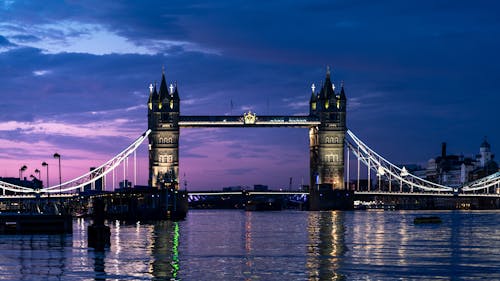"To a lover of Chardonnay wines, the grape variety announces itself as unmistakably as the theme of Beethoven's Fifth Symphony. No other white grape has a more complex aroma. No other white wine has a more welcome caress as it lingers on the palate." Eleanor McCrea, California vintner
Summer is not far off and that means it's time to lighten up. Your wine choices, that is. For those of you that have been drinking white wine throughout the year, take a bow. Otherwise, consider chilling down a bottle of Chablis.
Chablis is the original no-oak Chardonnay. Unlike white Burgundy, traditional Chablis is (mostly) unoaked, making Chablis a great summer sipper or with the kind of light foods that seem to be right with warmer weather.
The region of Chablis, in northeast France, is part of Burgundy, although it is about 60 miles from the main part of Burgundy. In fact, Chablis is closer to Champagne than it is to the rest of Burgundy.
Geography aside, the vineyards of Chablis grow only Chardonnay, the same white grape of the Cote de Beaune sector of Burgundy and, in fact, the same white grape of Champagne.
| A little chapel on a hill in Chablis |
In 1938, the Chablis appellation was separated into four classes. At the top is Grand Cru Chablis, made from seven named vineyards, such as Les Clos, Les Preuses, Vaudes, all grouped on a slope near the small town of Chablis. Next is Premier Cru Chablis, with 40 named vineyards. Then, come those wines identified simply as Chablis, followed by Petit Chablis.
Although this ranking is assured by law, it is important to remember that quality and value vary up and down the ranks, with Petit Chablis sometimes offering higher quality for the money, then say, a Premier Cru.
Digression -- One of the disadvantages of the French Appellation d'Origine Controlee (AOC) wine laws could be described as the unfortunate reality of exclusion. For example, two vineyards may only be separated by a road, but a number of factors, with soil composition usually the most important, determines that one vineyard is Premier Cru and another not. Further, the owners of the seven Grand Cru vineyards, by virtue of their AOC status and not quality (although the Grand Cru wines are of high quality), may ask a premium price for their wines.
For comparison, here are the prices for the three levels of Chablis from the noted producer William Fevre: Chablis, $30; Premier Cru "Montre de Tonnerre," $70; Grand Cru Vaudesir, $150. Petit Chablis from an array of wineries is about $18-$20, while older Grand Crus can get up to $600.
What is the difference between Grand Cru, Premier Cru and standard Chablis? More importantly, are the differences worth the steep price increases? Good questions, so let's take a closer look.
Terroir and price are the main factors that determine the status of a vineyard. Based on such stable factors as soil and grape variety, a determination is made for Grand Cru, Premier Cru or Chablis. That is, if the combination of the Chardonnay grape and soil composition produce a complex wine of depth, complexity and potential, that vineyard may be designated as Grand Cru. Anything less will likely be Premier Cru.
That, of course, is a very simplified explanation. There are other determining factors besides grape and soil, foremost being money. A case in point is the Baron Phillipe de Rothschild, in 1973, using his position, power and money to convince authorities that, Ch. Mouton-Rothschild deserved to be elevated from a Second Growth to a First Growth in the 1855 Classification of Medoc wines.
Traditionally, Chablis has been made without the benefit of oak. However, in the late 20th century, a group of Chablis winemakers, notably Regnard, Louis Michel and others, decided that a modest touch of oak brings an extra dimension to their wines without masking the characteristic crisp acidity and the subtle mineral aspect that distinguishes Chablis
The Non-Chablis "Chablis"-- Back in the day, it was not uncommon for large California wineries to trade on French, German and Italian wine and place names like "Burgundy" and "Chablis," "Rhine" and "Chianti." Usually, the wines were generic blends of lesser varieties such as Alicante and Colombard. California "Chablis" was often a blend of Colombard and Chenin Blanc.
The practice of using European wine names has mostly disappeared, but it might be interesting to conclude with a short commentary from nearly 50 years ago by Leon Adams, often considered "The Dean" of American wine writers, in his seminal "Wines of America," about the use of "Chablis" by two of California's largest wineries.
"A puzzling consequence of generic labeling is that American vintners, being individuals, have never agreed on just what the semi-generic European names mean. (American) Chablis is mostly white and burgundies are red (unless labeled white), but these wines can range in taste all the way from bone dry to semi-sweet, depending upon which American winery makes them. I wonder how the citizens of the small Burgundian town of Chablis, world-famed solely for its dry white wine, must have felt when they first learned in 1965 that Gallo of California had begun labeling one of its two rose wines as 'pink chablis,' and soon afterward when the Italian Swiss Colony introduced a red wine labeled 'ruby chablis.'"
The choice is yours. Select Chablis at any level, depending on your budget, or go for a crisp Chardonnay from Washington state and Oregon, or an unoaked Chardonnay from California's cooler regions like Mendocino's Anderson Valley, Sierra Foothills and Santa Barbara County.
Next Blog: Cote de Beaune
Contact me at boydvino707@gmail.com



